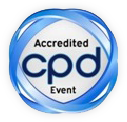Arshalooz J Rahman
Aga Khan University Hospital, Pakistan
Title: Causes and outcome of Stevens-Johnson syndrome in children presenting to a tertiary care center
Biography
Biography: Arshalooz J Rahman
Abstract
Background & Aim: Stevens-Johnson syndrome (SJS) is one of the most dreaded drug related complication leading to extensive mucocutaneous involvement in severe cases and long term complications. This group of disease is related to certain medication groups however we report a substantial number of non-drug related cases as well. The aim of this study was to look into various causes and outcome of SJS in children presenting to our institute.
Method: A 10 year retrospective review was done on all the cases coming to the Aga Khan University Hospital, variables like etiology, clinical characteristic, treatment and outcome were entered on a predesigned profoma and frequencies were analyzed on SPSS 17.
Results: Total sample size of 97 patients was analyzed; 69 patients presented with generalized rash (more than 10% of body involvement with mucositis) and 12 had localized disease (less than 10% skin involvement) 16 patents were categorized as in between category. Exposure to drugs 77 (79.4%), 20 (20.6%) cases were categorized as non-drug related. Out of drug group 52% were exposed to antibiotics, 22% were given antimalarial and 10.5% were given antiepileptic medication. Among the therapeutic interventions intravenous steroids were given 30%, IVIG 2% either alone or in combination rest were managed with supportive care. 23.7% developed systemic complications (AKI 12.6%, sepsis 46%, Pneumonia 13%, and one case developed ocular complication while in hospital. Outcome was classified at the dime of discharge fully resolved 10.6%, partial resolution 71%, mortality 14.4%.
Conclusion: Drug related dermal complications like SJS are predominantly attributed to antibiotics, antimalarial and antiepileptic drugs however non drug related presentations also contribute to significant number of cases. Delay in recognition leads to systemic complications morbidity and mortality if not treated on time.

